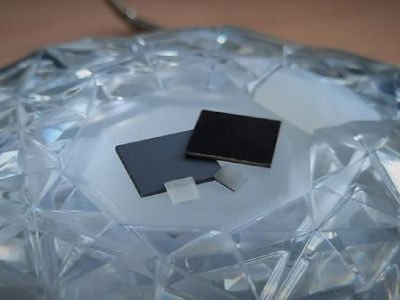
Credit: Arsène Chemin/HZB
New research from The Helmholtz-Zentrum Berlin (HZB) has shown that diamond materials would be suitable for use as photoelectrodes. Photoelectrodes could be used to convert greenhouse gasses such as CO2 into methanol or N2 into fertilizer using only sun energy.
Lab-grown diamond materials are of particular interest to a number of researchers as they have numerous applications ranging from quantum computing to medical implants. Diamond photoelectrodes also degrade at a significantly slower rate than their metal-based counterparts. Diamond materials release electrons in water and can trigger chemical reactions that are otherwise difficult to initiate, making them a suitable metal-free photoelectrode material.
Despite these promising applications, diamond electrodes oxidize in water and it is commonly assumed that oxidized surfaces do not emit electrons into water. also, the bandgap of diamond is in the UV range, making it unlikely that visible light would be sufficient to excite electrons. Despite these drawbacks, the recent research from HZB is a cause for hope
The study, published in Small Methods, studied diamond materials that were optimized for CO2 reduction reactions. The materials were doped with boron to ensure conductivity as well as nanostructures to increase surfaces for emission of charge carriers. The researchers utilized four different X-ray spectroscopic methods at BESSY II to characterize both the energy needed to excite electronic surface states as well as to characterize the surface of the materials. Along with these measurements, surface photovoltage was also measured to determine which surface state is excited and how the charge carriers are displaced. Finally, photoemission of electrons was also measured in air and liquid to complete the comprehensive picture of the process that takes place on the surface of the materials.
"Surprisingly, we found almost no difference in the photoemission of charges in liquid, regardless of whether the samples were oxidized or not," said Dr Arsène Chemin. "These results are a great cause for optimism, with diamond materials we have a new class of materials that can be explored and widely used."
These findings show that not only can diamond materials be used as photoelectrons in aqueous solutions, but that they can also be suitably excited by visible light.